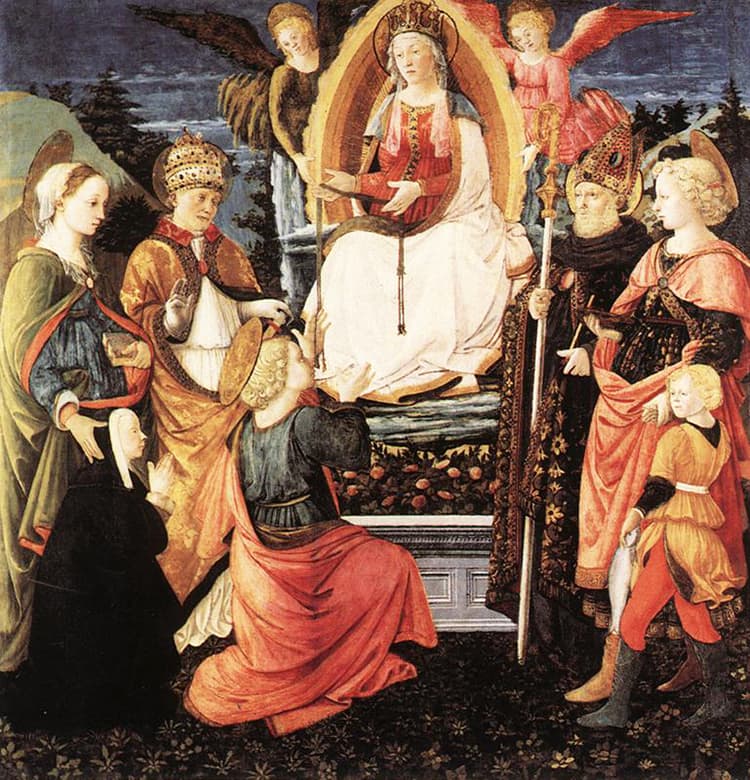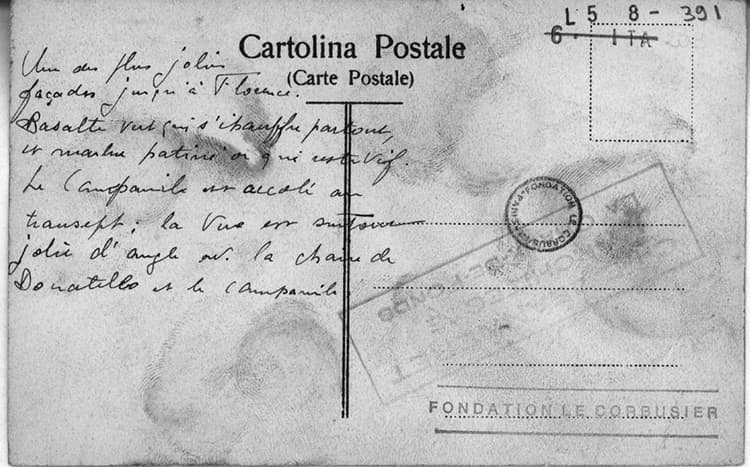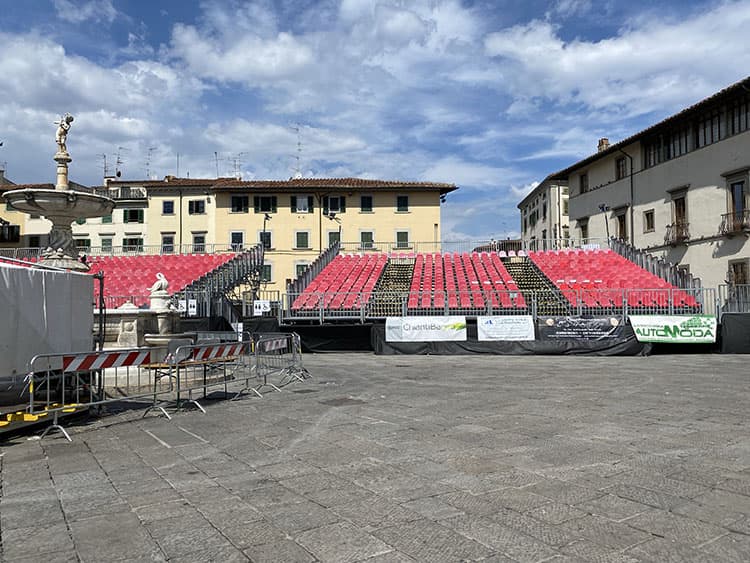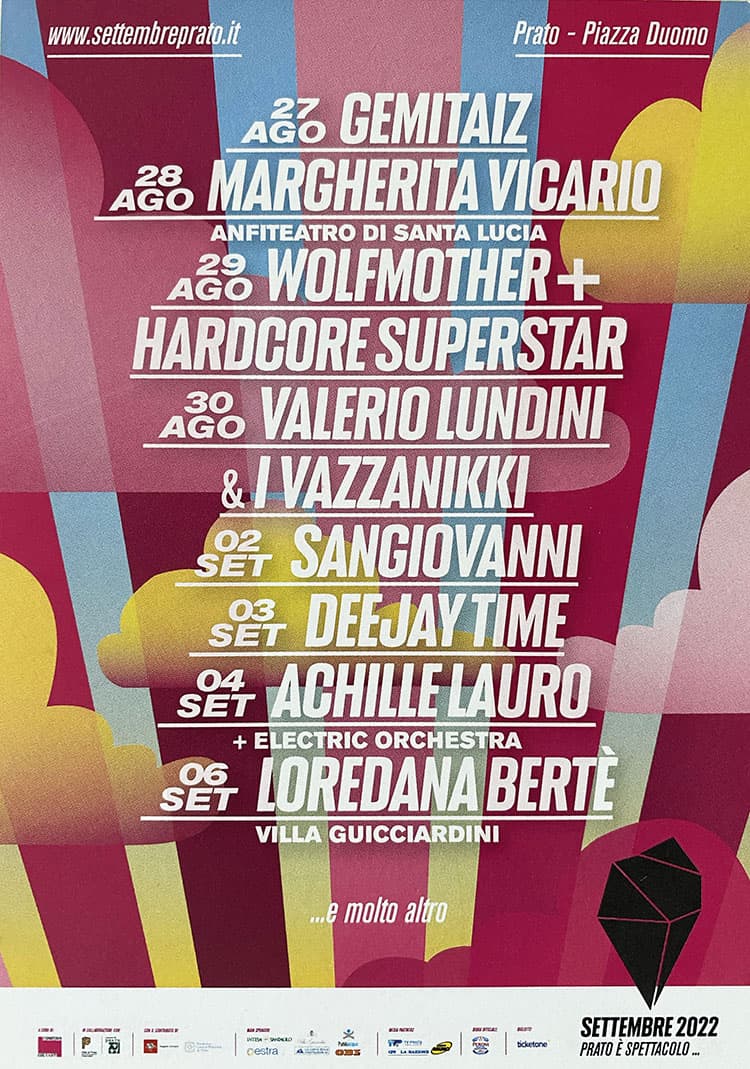In the first row
Prato in September between sacred and profane

"When I was younger, I was very much a stray: and there was never any fair in Prato, that I did not attend..."
So wrote Niccolò Machiavelli in 1500 in "La Mandragola"
The sacred
For centuries, Sept. 8, the feast of the Nativity of Mary, has been a very important occasion during which the city of Prato rallies around the precious relic of the Sacred Girdle, which has been kept in St. Stephen's Cathedral for eight centuries. The Sacred Belt, also called the Sacred Girdle, the belt of Our Lady, is considered the centerpiece of the city's religiosity. The relic is a thin strip (87 centimeters long) of the finest goat's wool, greenish in color, brocaded in gold thread, which according to tradition belonged to the Virgin Mary, who gave it to St. Thomas as proof of her Assumption into heaven. Thomas, before leaving for the Indies, entrusted the relic to a priest of the Eastern rite, until it came into the possession of Michele Dagomari da Prato, who in 1172 donated it to the parish, becoming, from the second half of the 13th century, the centerpiece of Prato's religious life and a pilgrimage destination. An external pulpit was built outside the cathedral in 1329 for public expositions of the holy relic. A century later, it was replaced by the current one built by Donatello and Michelozzo.
.jpg)
Over the centuries, the Belt has become an object of veneration and worship whose fame has transcended the city walls, drawing worshippers and pilgrims from even distant cities and lands; these include St. Francis (in 1212), Alexander V and King Louis of Anjou (in 1409), St. Bernardine (in 1424), Pope Eugene IV and Byzantine Emperor John Paleologus (in 1439), Joan of Austria (in 1565), Maria de' Medici (in 1600), Pope Pius VII (in 1804 and 1815), Pope Pius IX (in 1857)and finally, coming to the present day, Pope John Paul II (March 19, 1986). The last pontiff to venerate the relic was Pope Francis in 2015.
The profane
During the days before and after this feast day, the most important fair (market) in Tuscany would take place in Prato, which is why September 8 in Prato is better known as Our Lady of the Fair. The city would be filled with pilgrims and merchants alike, as well as with stalls selling everything, including, of course, Prato cookies.
As Architect Le Courbusier also reports: "(...)on the day I went there, there was not a square meter of street that was not occupied like a showcase by cookies of all shapes, flavors, and no doubt also of different origins; you would have thought it was the day of the day of the annual festival. I thought of Port Tarascon and its apothecary: let's have a row, let's have a row! The shouts got louder; and all this led to carousels, a poignant reminder of our dear Ga Square! Fortunately, the little spirits of Donatello's pulpit danced to another music, it was more harmonious and more artistic." Excerpt from Le Corbuosier's postcard of September 13, 1907

In Prato we say: A great forest of noise!
To this day, the month of September has become a time dedicated to celebration and entertainment in the city.
After two years of very little festivities (due to restrictions), this year the cathedral square is once again set up with stands and a stage, where various artists will perform.

Here's what awaits you:
